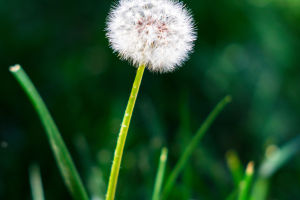The butterfly is a generic name for a group of insects in the insect, amphiesmenoptera and lepidoptera, and nearly 20,000 species have been recorded worldwide.
Butterflies are diurnal insects and their activities are all during the daytime, with flight posture and speed varying from species to species. Adult butterflies suck nectar and juice by siphoning mouth parts, and also suck clear water from streams or mosses, bird and animal fecal fluids, and animal carcasses' body fluids, with different feeding habits for different species.
Due to the different habits of adult butterflies, the structure of the external genitalia changes to ensure that different species do not interbreed. Before mating, most butterflies go through a period of courtship flight, and some species have to have a large space for their nuptial flight.
Butterflies are important ecological indicator species because of their sensitivity to ecological changes.
The larvae and adults of butterflies, which have different lifestyles, feed on different objects. Many of the adult stages are nectar suckers. They act as pollen dispersers to many plants in nature during nectar collection.
There are many kinds of butterflies, and the colors and patterns of butterfly wings are extremely rich. People have studied and analyzed such natural matches and found out the laws of color contrast, which are thus applied to various artworks and textile color designs.
In the textile process, people have analyzed many chromatograms from the colors of butterfly wings using the spectrum, providing clothing designers with a variety of blending colors, which can be used for trim and clothing color matching, giving people a sense of beauty.
Various patterns can be designed according to the color and pattern of butterfly wings. The shimmer in textiles also makes use of the principle of scaly wing shimmer, so that the fabric can present different colors from different angles.
This can also be said to be bionics in a broad sense.
More butterfly patterns can be seen in fabrics, embroideries, and handicrafts, and some artists also use the beautiful and colorful butterfly wings to collage into butterfly wing paintings of high artistic value.
The butterfly also implies many symbolic meanings.
In the Western world, the butterfly symbolizes the three stages of life: birth, death, and resurrection, and its creation as an element mean metamorphosis and rebirth, which is interpreted religiously as a kind of reincarnation, implying the continuity of life.
In ancient Greece-Roman legend, the butterfly symbolizes the soul that is released from the body and goes from the human world to the afterlife, and the butterfly has a religious meaning of soul rejuvenation.
In ancient Greek mythology, Psyche, the goddess of the soul, made Cupid fall in love at first sight. She was more beautiful than Venus in Greek mythology, but Venus was jealous of her beauty. He sent Cupid to punish her. Cupid fell in love with Psyche instead, and eventually, Cupid defeated Father Time and woke up the poisoned Psyche with a kiss.
The butterfly's intention of life represents metamorphosis and eternity, but also a kind of liberation from bondage, lightness, and freedom.


